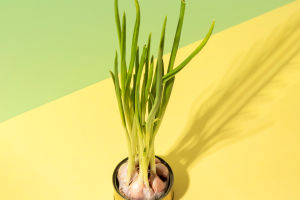Cotton is one of the most significant fiber crops globally, boasting a rich history and extensive applications.
It serves as a crucial raw material for the global textile industry and holds substantial importance in various domains, including the economy, environment, and society.
The history of cotton cultivation can be traced back to ancient civilizations. Archaeological evidence indicates that ancient societies in India and Egypt began utilizing cotton fibers as early as around 5000 BC.
These early cultivators refined cotton varieties to suit local climates and needs through ongoing selection and improvement. In China, cotton cultivation also has a long history.
By the Han Dynasty in the 2nd century BC, cotton had been introduced and was being grown in the southern regions. Ancient Chinese cotton weaving techniques were advanced, and cotton soon became a crucial textile raw material in China.
The spread and commercialization of cotton surged, from the 16th to the 19th century, and the range of cotton cultivation expanded rapidly, establishing itself as a significant economic pillar worldwide.
Cotton cultivation requires specific climatic conditions. It thrives in warm climates and is particularly suited to sunny, well-drained soils. The production cycle of cotton generally spans about six months, with the period from sowing to harvesting usually ranging from 150 to 200 days.
Sowing typically occurs in the spring, with cotton plants undergoing three main stages: germination, flowering, and boll formation. The mature bolls are harvested in the fall.
Traditionally, cotton has been picked by hand, but modern agriculture has adopted mechanized picking techniques to enhance efficiency and reduce labor costs. Following harvest, cotton undergoes processing, which includes delinting, cleaning, and combing, before being made into yarn or cloth.
Cotton plays a vital role in the global economy. It is not only a fundamental raw material for the textile industry but also provides a significant economic income for numerous countries. Farmers in many developing nations depend on cotton cultivation for their livelihoods.
Countries such as India, China, the United States, and Brazil are major cotton producers. Every stage in the cotton industry chain—from planting to processing—creates numerous employment opportunities.
In developing countries, the cotton industry often represents a primary source of income for farmers and workers. Additionally, cotton is a critical commodity in international trade.
Many countries rely on cotton exports to bolster economic development, while others depend on imports to fulfill the demands of their domestic textile industries.
Despite its economic significance, cotton production presents environmental and social challenges. The cultivation of cotton demands substantial amounts of water and pesticides, which can lead to excessive water consumption and environmental pollution.
In response, many countries and companies have started advocating for sustainable cotton production practices, such as reducing pesticide usage and improving water efficiency. Labor conditions within the cotton industry also raise significant concerns.
Some cotton-producing regions face issues related to low wages and poor working conditions. To address these issues, international organizations and companies are promoting fair trade and ethical procurement practices.
As a vital fiber crop, cotton has a rich historical background and continues to play a crucial role in contemporary society. With a growing global emphasis on sustainable development and environmental protection, the cotton industry is expected to persist in making positive contributions to global economic and social advancement.


